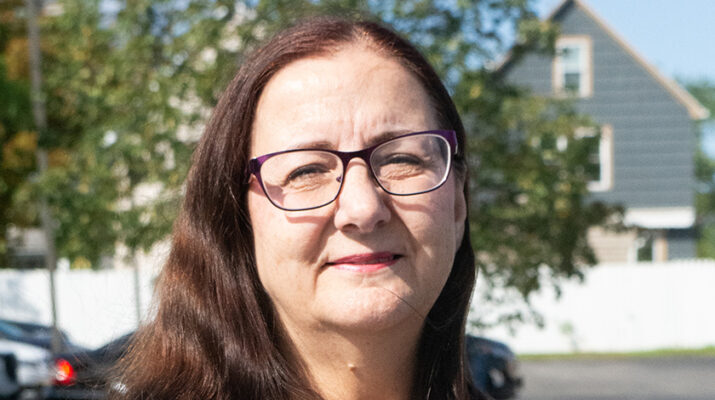Get screened for breast cancer: There’s really no excuse
By Julie Halm
Patty Wieczorek wasn’t experiencing any symptoms of breast cancer at the age of 48. She had no family history of breast cancer, either. But she still went regularly for screenings — something she says that all women should do.
The practicality of that advice proved itself when at that age, at a regular screening, Wieczorek learned that she had ductal carcinoma in situ in one of her breasts. While not the news that anyone wants to hear, the meaning of the medical lingo is that the problematic cells have not spread outside of the duct.
According to the Breast Cancer Research Foundation, this particular form of cancer has a 98% survival rate at the 10-year mark.
Wieczorek is not one to panic easily, she said, referring to herself as a very practical person. She also noted that her husband is an epidemiologist and her son is an OB-GNY, so she is plenty used to being in the world of healthcare.
“My attitude was ‘OK, now what’s next? Let’s get ‘er done,” she said.
What was next was surgery. She underwent a total of four to make sure her margins were clear and then underwent radiation to complete her treatment.
For the next 10 years, she continued to undergo routine screenings, urging her two adult daughters to do the same.
Although she felt calm and pragmatic about her own journey, a mother never stops worrying about her own children, she noted.
“It’s concerning, it really is,” she said. “It’s very important for the first generation after me to get screened regularly. Your girls are considered high risk because your mother had it.”
She and her daughters have also undergone genetic testing and Wieczorek said that she is encouraged by the ongoing advancements in that process as well.
“Before, they used to only look at the BRCA1 and BRCA2 genes,” she said. “Now they look at 17 different genes.”
Despite the initial optimism of her prognosis, a decade later, Wieczorek would learn that her cancer had returned and this time, she was not a candidate for the measures doctors had taken the first time.
“So at that point, once you’ve gotten radiation, it’s over with and you can’t do radiation again on that particular breast so then you end up having a mastectomy,” she said.
Through the second diagnosis, which came about five years ago, Wieczorek said that she maintained the attitude and outlook she had the first time.
“My whole philosophy, when it came back, was like, ‘OK, now what?’” she said. “I didn’t fear dying.”
That kind of courage, though goes hand in hand with taking pragmatic steps to prevent the situation from becoming worse than it need be, including getting screened regularly. While she firmly pushes her own daughters to get screened, Wieczorek said that she also encourages other women to do the same, noting that for most, the cost of screenings is covered by insurance as a part of regular preventative care.
“There really is no excuse,” she said. “Just make the appointment.”

